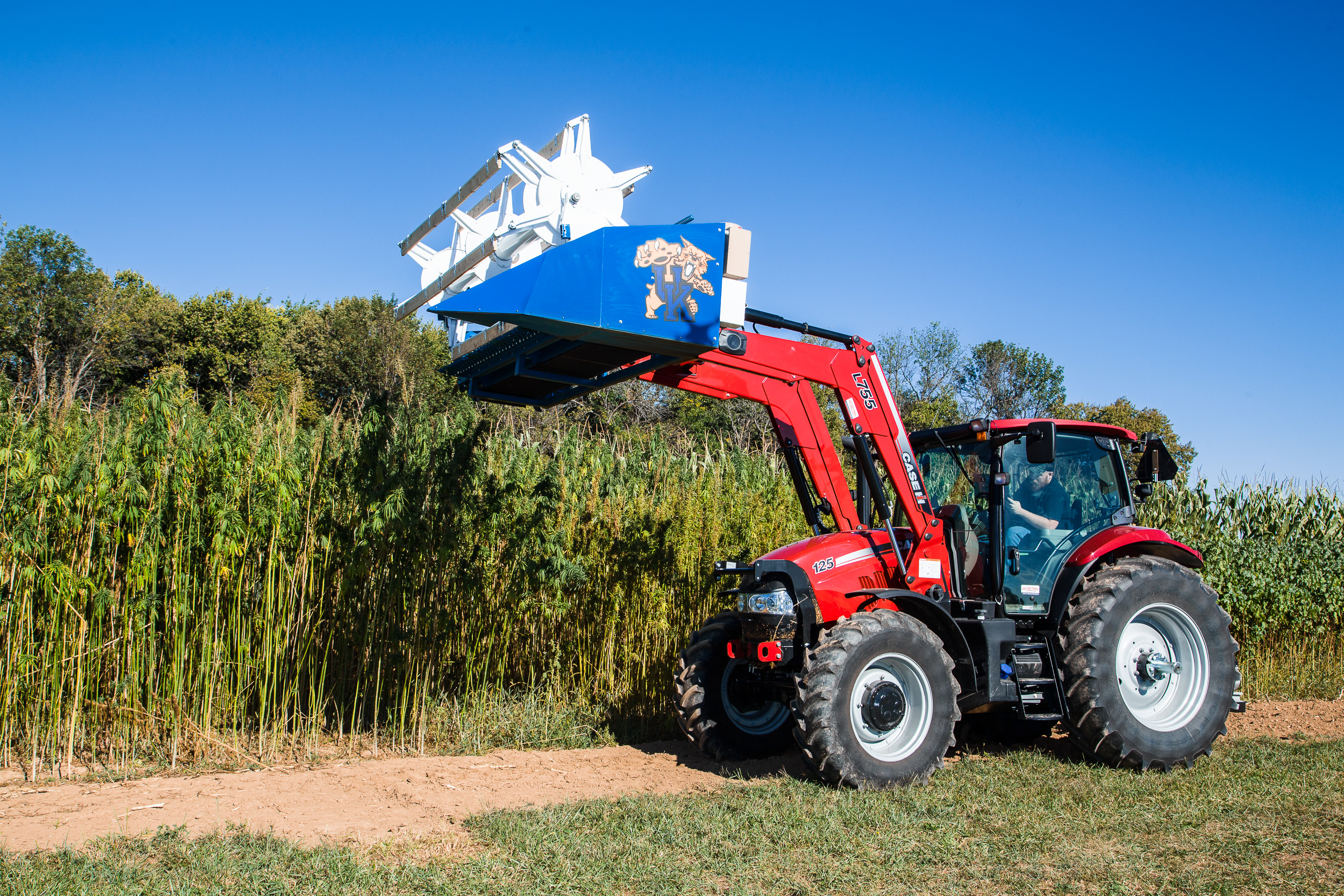UKAg hemp harvester design shows promise
UKAg hemp harvester design shows promise


Until 2014, Kentucky farmers hadn’t grown industrial hemp in more than 50 years. Since then, University of Kentucky College of Agriculture, Food and Environment researchers have taken on many projects with the crop. With research for pharmaceutical use of hemp components coming into focus, farmers are realizing a real challenge—harvesting the giant plants.
“The part of the plant the pharmaceutical industry believes has the most potential is the flower at the top,” said Tim Stombaugh, UK extension agricultural engineer. “That flower is the part where they can extract the most cannabinoids. If the crop were shorter, we could use traditional hay harvesting equipment, but most varieties are currently just way too tall for that at 10 to 12 feet.”
Most recently the process for growing and harvesting hemp for cannabinoid extraction has been through intensive management of individual plants in a greenhouse environment. The scientist grows the plant, harvests the parts they want, hangs it upside to dry and then individually processes each plant. Stombaugh said they thought about trying to harvest the flowers by hand, but with 30 acres, it just wasn’t feasible.
In the summer of 2015, a participant in the Kentucky hemp pilot program approached the UK Department of Biosystems and Agricultural Engineering and offered to fund a project to design a harvester.
“They contacted us last July and asked if we could have a prototype by Sept. 1,” Stombaugh said. “It was a tight deadline, but our engineers got busy, and we had it ready to use.”
UKAg engineers borrowed from current technology. They used the grain head from a combine and selected several useable parts. The new harvester can connect to any tractor with a front-end loader with a standardized connection. They used electricity to power the harvester.
“Most implements use hydraulic power, but that would have made it harder to move from tractor to tractor,” Stombaugh said. “We put a generator on the back of the tractor to create power for the harvester. All of the equipment can fit on the back of a gooseneck trailer, so it’s very easy to move from one machine to another.”
While farmers are still in the investigative stages of hemp production, the harvester shows potential to help cut down on labor and reduce time in the field.
“If hemp is going to be a potential crop for Kentucky, and we can do some things to help farmers harvest it, it’s going to be valuable for everyone down the road,” Stombaugh said. “There’s still so much we are learning about hemp, but we did the best we could, and it worked. Helping farmers do their jobs in a way that saves them money, labor and time is always something we are interested in doing.”
The hemp harvester spent the winter on the UK campus but will likely be out in the field later in 2016.
Biosystems Ag Engineering Crops Research

